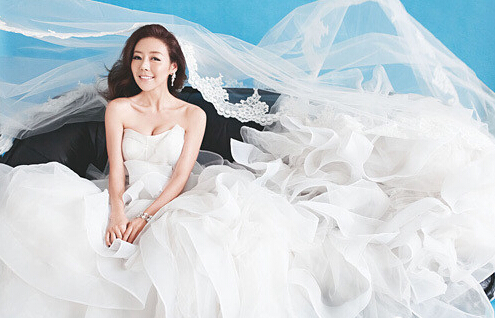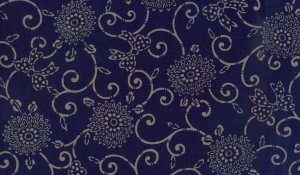Knitted fabric printing definition:
The various colors of dye or paint made of paste, applicator printed on the fabric pattern into the process, generally known as textile printing. Processing means for the completion of textile printing and the use of, Pan said printing process (printing is the use of printing paste containing the original delivery role, so that the dye or paint printed on the fabric into a flower pattern in the process).
Textile printing processes include:
Carving and flower patterns produced version, printing (proofing, paste modulation, printed pattern) after treatment in three parts. Detail, including both: graphic design, printing process selection, carving choice spendthrift carving (or flower plate production), imitation color proofing, paste modulation, fabric prepress processing (such as adding white, pre-shrinking, stenter , weft, dye etc.), printing, steaming or baking, washing plus soft and so on.
Difference dyeing and printing
The same principle of dyeing and printing dye and fiber combination; required for dye fixation external environment (ie, the process conditions) the same; same request with the fastness. However, in the printing of a color is applied only to the spendthrift sculptured spreads part of the fabric, properly processed, complete the process of dyeing fibers dye in the fabric have one or more color prints, so printing is a partial dyeing.
1, different media: water stain in general, printing paste generally have to add more paste to thicken and prevent infiltration of patterns;
2, dye concentration different: whether with dip dyeing, jigger, or tie-dye, the dye concentration is not high, the concentration of the dye printing paste is often high (due to the partial rationing, and dye transfer from the slurry to the fabric rate, the coloring is not high), need to add a co-solvent, urea, alcohol, etc.;
3, the fixing process is different: after printing to prevent bleeding of the dye, drying the paste film are required, the fixation of the dye to the printing by steaming, baking and other post-treatment to improve the diffusion of the dye, the final dyed fibers
4, to choose a different dyes: dyes suitable for dyeing may not apply to printing, similar reasoning applies to printing dyes do not necessarily apply to stain. As a reactive dye staining is available but not high solubility phenomenon highly colored points for printing color unevenness; Another example of a trend in the reduction of vat dyes large but slow reduction rate, and the steaming time and is easy to produce offshoot reaction, printing can not be but stained with a dry cylinder reduction, low temperature dyeing; Again the reaction rate is too fast under a high-temperature reactive dyes, highly uneven dyeing, and printing is available and more appropriate. Sometimes with a special stamp printing dyes, dye selectively;
5, to fight the case and process different materials: Requires little fight in recent fight, fight with a selected process conditions and staining Ingredient, while printing, often use different types of dyes, conducted jointly with the paste printing or printing, such as direct printing + anti / pull printing, as a calico paint on both active, as well as reduction, etc.;
6 different requirements for semi-finished products, calico high pre-treatment requirements:
a, semi-finished products for hair calico efficiency and barium values demanding, requiring uniform instantaneous capillary effect and good capillary effect, namely uniform and fast surface finish of the fabric also higher;
b, semi-finished products for printing skew, width shrinkage and demanding, especially printed plaid, circles, stripes, squares, etc., and can be dyed after staining the whole;
c, different requirements for fabric: Printed fabric dyeing than hiding better, and spend more full blocks covering more chaotic the finer the better, but not dyed, printed fabric on fabric selection so critical as dyeing high.
Knitted fabric printing method
Divided by technology: direct printing, discharge printing, resist printing, anti-paste printing
By equipment of:
First, type edition printing
Type edition printing advantages:
1, flexible, easy carving, suitable for small batch production
2, pattern size, chromatic unrestricted, gaudy printed products.
Disadvantages:
1, stamped outline is not clear enough, the pattern due to the fine;
2, printed straight (bar) registering the pattern, no measures are taken can not be printed hollow circular pattern;
3, chromatic spend more difficult;
4, low labor productivity.
Second, copper roll printing
Roller printing is pulling flowers engraved on copper spendthrift, storage in the recessed portion spendthrift paste, paste printing process is transferred to the fabric.
Advantages: clear pattern, rich layers, high production efficiency, speed up to 100 m / min.
Cons: limited chromatic printing, unit size of the pattern and fabric width is limited; spendthrift pattern printed by the first printing on fabric extrusion, resulting in mass color affect color vividness, and (due to compression) color not full; fabric by tension, suitable for light books and deformation fabric printing. 70s roller printing machine is the widely used printing equipment, is now gradually being replaced by screen printing.
Third, screen printing
1, flat screen printing: screen frame is first prepared in a pattern on the screen frame where the mesh was hollow, no pattern of the mesh smear. When printing paste was printed onto fabric and mesh scratched up.
There are flat screen printing machine from the degree of automation
(1) manual – Box-action hand platen (of course there are semi-automatic type);
Advantages: Flower back, trapping unrestricted pattern outline a clear, rich and gaudy colors, fabric tension by small, suitable for small batch production.
Disadvantages: large area, high labor intensity, low productivity, flower, uneven squeegee, then printed version is a common flaw, and straight, Montreal and other patterns can not accept version.
Application: used for fabrics, garments and pieces printed, knitted printing.
(2) automatic flat screen printing machine – cloth-action.
Printing Process: cloth travel guide – the conduction band to stop running – Screen decline – squeegee – screen upgrade – reincarnation
Pros: small footprint and labor intensity, trapping more and spend unlimited back, the color is more nuanced, fabric by little tension.
Disadvantages: Similar to frame acting, the printing type is restricted.
Application: suitable for small volume, variety, easily deformed, light book upscale fabric, used for printing sheets, silk, knitted fabric.
2, rotary screen printing machine
The flat screen be made of a cylindrical screen printing on continuous operation with a roller printing features.
Advantages: high efficiency, low labor intensity, easy operation, small footprint, multi-color printing, color was not as gaudy degree heat platen screen printing, but better than the drum, flowers and flat screen flexible back though, but better than the big drum, no contact with the printed version of the drum as a problem.
Disadvantages: subject to certain restrictions flower printing, roller printing pattern level is better, especially printed moire effects, color transition difficulties, high nickel net cost.
Fourth, transfer printing
Printing with the dye ink printed on paper made, the pattern was printed on paper (referred to as transfer paper); positive after the transfer paper is printed on the front fabric with the close fit at a certain temperature, pressure, squeezing a certain time, so that the dye sublimation transfer paper on the dyed fabric to be printed up, which is called sublimation thermal transfer method or the transfer method.
Advantages: transfer paper for long-term storage, you can always transfer as needed, to facilitate the production, do small batches (tens of meters can be made), product defects rarely printing on fabric prepress requirements low, due to the need to deal , colorful patterns, levels, and can significantly Photos prototype.
Disadvantages: fiber used dyes narrow range, a large number of current use is mainly polyester fabric dyes on heat transfer, and applies mostly low temperature disperse low sublimation fastness, color yield are all too apparent color.
Fifth, multicolor printing dye leaching method
Rationale: When the dye solution before absorption of water or a color of the fabric, will be able to produce “anti-pollution effects,” leaving another color dye stain blocking solution. Using this principle, different color dye can be sprayed on the fabric, although the patched-color mixing these colors the dye, but the color of the fabric, but there are different dye from the fabric coming down, mostly single topped to color, is also part of two colors mixed colors, resulting in the formation of color patterns….

